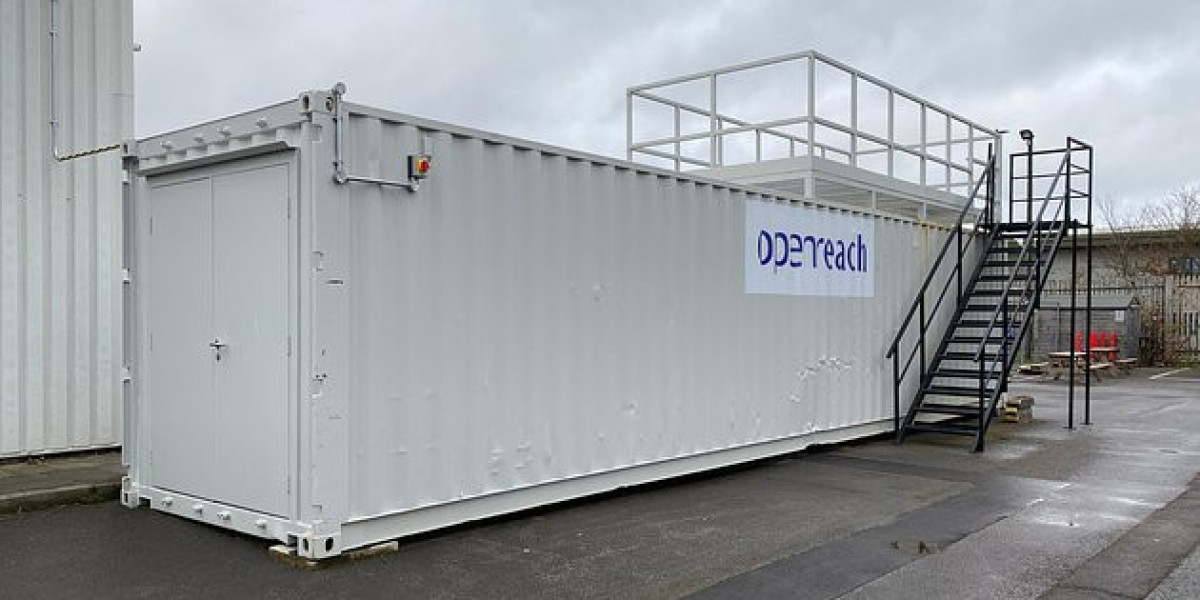Refrigerated Containers (also known as reefers) are used by a variety of industries to transport temperature-sensitive products over long distances. Catering companies that deliver cooked meals to research labs transporting blood plasma, refrigerated containers can be customized with features such as remote monitoring and backup power options.
 Utilizing a refrigerated shipping container will ensure that your goods arrive in perfect condition. Efficiency is a primary aspect for modern refrigeration systems as is insulation of the highest quality.
Utilizing a refrigerated shipping container will ensure that your goods arrive in perfect condition. Efficiency is a primary aspect for modern refrigeration systems as is insulation of the highest quality.Customization
When it comes to refrigerated containers every choice you make pave the way for the security and security of your cargo. Your careful choices will ensure that your goods remain at their top by ensuring you select the appropriate size for different types of shipments, and high-tech features to elevate cold chain management.
If you select an appropriate container for the volume of your product, you will be able to reduce temperature fluctuations and increase energy efficiency. Another important aspect to consider is the type of insulation that is used. Foam and vacuum insulation panels are both available, but picking the right one depends on your particular requirements. Foam is less expensive, however vacuum insulation panels have superior thermal resistance.
In the realm of reefer technology, using IoT capabilities that allow for continuous monitoring and status alerts ensures your shipment is protected throughout its journey. These digital advancements also increase operational efficiency and visibility into the supply chain.
A specialized refrigeration unit can be designed to meet the specific demands of your product and ensure their safety on long trips for example, in the case of live cargo or pharmaceuticals. These specialized containers may feature redundancy systems to prevent any unexpected system failures. They could be fitted with materials that meet the high standards of the pharmaceutical industry or ensure a safe and healthy environment for transit for livestock.
Other innovations include airflow vents or fresh air ducts to manage the internal atmosphere and ensure it stays stable. These piping systems remove gases such as ethylene, which accelerates the ripening process of fruits and ensures an even distribution of temperature across the container. Additionally, a built-in drainage system prevents water accumulation and insect infestation.
Energy Efficiency
Refrigerated Containers provide a secure and safe place to store temperature-sensitive cargo. They can be used to protect pharmaceuticals as well as premium food items. They are constructed with sophisticated controls and high-quality insulation to keep internal temperatures steady. They also come with enhanced security features that help ensure your product is safe from theft and vandalism. Some containers are even made to be eco-friendly and utilize renewable energy sources, making them a sustainable choice for companies.
While refrigeration systems are crucial to preserve the quality of cargo, they also consume significant amounts of energy. This is especially the case when containers are kept in large quantities on the same vessel or at a terminal. This power consumption is high and can be offset by using refrigerated containers with automated temperature control systems. These systems are designed to monitor and adjust the temperature of a container based on the surrounding environment which results in significant energy savings.
Modern refrigerated containers (reefers) concentrate on energy efficiency and use advanced cooling and insulation techniques to cut down on the power consumption. Diesel generators are often included in these containers so that they can be used even if there is no power source. This allows them to function in the middle of the road or even when stationary power isn't available.
A large share of the power consumption of refrigerated containers is triggered by heat exchange between the container's interior and environment through insulation that is cold-resistant. The percentage varies from 35 to 85% in cooling mode, and up to 50% in heating mode (Filina and Filin 2004).
To reduce the energy consumption of refrigerated containers, the following measures are suggested. These include adjusting the layout of the terminal and electrical handling equipment use, search for energy-saving operations of refrigerated containers that have frozen or chilled cargo, and the integration of truck scheduling and cranes (Yang and Lin 2013). It is important to note that the reduction of ( Overset bullet Q _1 The total electricity consumption will be reduced proportionally by reducing the proportion of component shares. As part of their innovation and energy-saving strategies, small ports and container terminals are advised to implement the measures proposed.
Security
Refrigerated containers are constructed with advanced security capabilities that ensure your goods are safe from being tampered with. The durable container's structure can stand up to environmental damage and external temperature fluctuations, while the door locks are built-in to stop unwanted access. Furthermore the refrigeration systems are separated from the rest of the container to ensure that any alteration or malfunctioning does not impact the temperature control. The units can be outfitted with temperature alerts that will notify you immediately if there are any problems.
Many industries depend on refrigerated containers for the transportation of their products. From catering companies that ship prepared meals to research laboratories that transport sensitive samples, refrigerated containers provide reliable, temperature-controlled transportation. In addition to safeguarding the quality of the products, refrigerated containers help businesses reduce waste and ensure compliance with regulatory requirements. Spoilage and waste are a major issue in industries which deal with perishable items. Spoilage can not only cause financial losses, but can also compromise consumer safety. With the latest temperature control technology, refrigerated containers can preserve the quality of the products, increasing their shelf time and allowing them to be used for longer.
The superior insulation found in refrigerated containers helps keep the interior at a constant temperature, allowing precise control over the inside environment. Modern reefer containers provide a range of cooling settings, ranging from chilled to sub-zero freezing. This lets you adjust the temperature to suit your needs and ensure your goods are kept in good condition.
Moreover, premium refrigerated containers have advanced air circulation systems that ensure an even temperature throughout the cargo area. They have fans that distribute cold air, even air to avoid hotspots and offer superior air circulation. These units also have humidity control to ensure that your food remains fresh and free from spoilage. Fruits and vegetables are especially sensitive to humidity control, as they continue to produce heat and ethylene long after harvest. In addition the ventilation system is designed to remove these gases from the container.
Refrigerated containers are a vital element of global trade, helping businesses reach customers around the world without compromising product quality. Make sure you choose units with precise temperature control, remote monitoring and backup power options to suit your specific requirements for transportation.
Maintenance
Refrigerated Containers are a great way to transport temperature-sensitive cargo, but they require proper maintenance and cleaning to ensure optimal performance. Some of the best ways to keep refrigerated containers in good working condition include regular calibration as well as maintenance of insulation, power maintenance and door maintenance.
Temperature Monitoring
Refrigerated containers can be monitored remotely to ensure that the temperature inside stays within a certain range. This feature also gives logistics professionals detailed information logs for quality control purposes. Specialized containers for reefers also come with backup power sources to ensure that temperature control systems aren't disrupted by outages.
Cooling
Refrigerated containers utilize an airflow system that distributes cold air throughout the interior, keeping the cargo at optimum temperature. This helps remove gasses, moisture and ethylene produced by fruits and veggies, which can lead to spoilage.
It is crucial to check the insulated piping inside reefers for leaks. A light made of soap and halide or electronic leak detector will help you pinpoint the problem. Additionally, it is an excellent idea to periodically examine for any accumulation of ice on the inside of the refrigeration unit. This could have a negative impact on the capacity of the container's cooling.
The most important component of the cooling process is the compressor, which is responsible for regulating and circulating the refrigerant inside the refrigeration system. Routine calibration of the compressor can improve its efficiency and decrease energy consumption.
Insulation is a crucial element of the special reefer containers because it reduces the heat exchange between the interior and exterior. To maximize the efficiency of thermal energy and maintain constant temperatures throughout the entire shipping journey, high-quality insulation materials, such as polyurethane is used.
The final step to ensure the integrity of refrigerated containers is to perform regular cleanings. This includes cleaning the interior of the container, and wiping off all surfaces. This is particularly important for areas that can affect the seals of doors, like behind and underneath them.
It is also an excellent idea to re-paint the exterior of refrigerated containers regularly. Using marine-grade paint can protect the container from corrosion and ensure it is in perfect condition. It is also crucial to repair minor scratches that could compromise the strength of seals.



